Bloody Leaf Lan's rescue and regression: 5 wild fruit pods breed seedlings in 3 years | Park China · Rain Forest Exploration
Author:Cover news Time:2022.06.29
Cover reporter Hao Yingtian Xuejiao Li Jiayu Liangjiaqi
On June 29th, after more than a month, in the depths of Bawang Ridge in the Hainan Tropical Rain Forest National Park, dozens of "wild" blood leaf orchids survive can still be unknown. Post -doctoral Zhang Zhe said that they were waiting for surprise.
In 2016, Professor Song Xiqiang's scientific research team of Zhang Zhe found that wild blood Yelan was increasing in Hainan. At that time, this Lanke plant was not a national second -level protection plant. "The situation of theft is more serious, let us feel the urgency of protecting it." Zhang Zhe said. When he found a group of wild blood leaf orchids embellished on the stone wall, he was afraid that he would disappear for a few days.
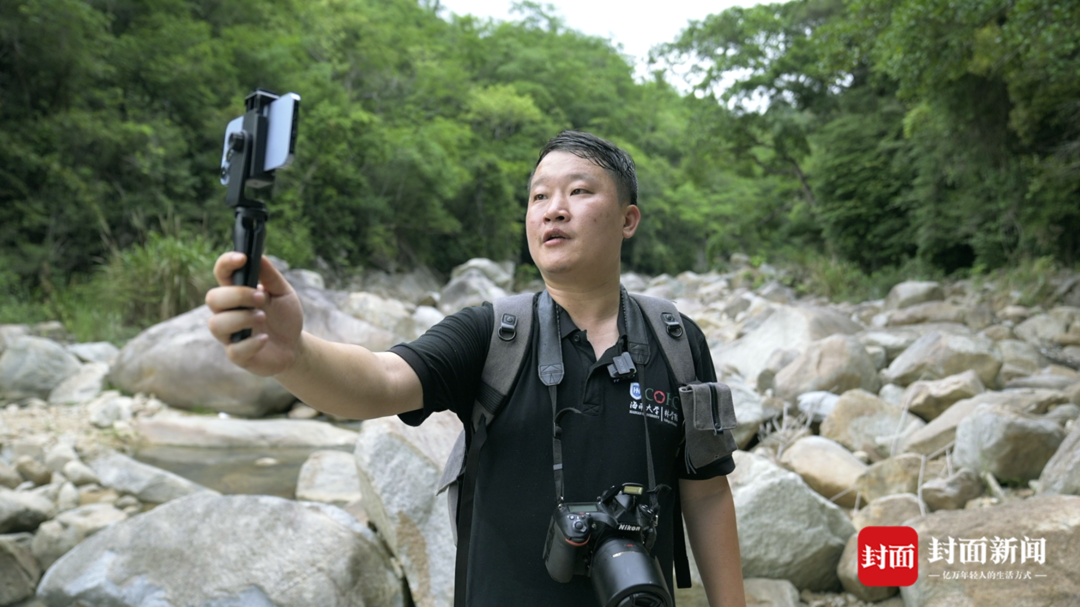
Zhang Zhe was shot on the cover of the cover of the Rain Forest Gully Valley
Zhang Zhe, who originally studied Lanke plant conservation biology, began to try to "rescue" blood leaf orchids. With the support of the Bawangling Branch of the Hainan National Park Management Bureau, his research team of Professor Song Xiqiang, Hainan University, has started to study the "descendants" of artificial cultivation of blood leaf orchids. From collecting fruit pods, cultivating seedlings, and "going home "They spent 6 years. During this period, Bloody Leaf Orchid was also officially included in the national second -level protection plant list.
On May 18, 2022, the first batch of artificial cultivation of blood leaf orchids returned to the wild, drawing nutrition and effort by themselves. Zhang Zhe plans to go back to monitor once a year.
The crisis of blood leaf orchid
Zhang Zhe, who has been stationed in the postdoctoral, has studied the Lanke plants for nearly 10 years. Half of the time spent in the wild, and the footprints spread all over the 7 areas of Hainan Tropical Rain Forest National Park.
Because of his special attention to the orchids in the rain forest, he realized the "crisis" of blood leaf orchids very early. "Probably when the excavation was the most serious, I just found a group in a certain habitat, and went to see it after half a month. It will disappear wild blood leaf orchids in Hainan Island. "
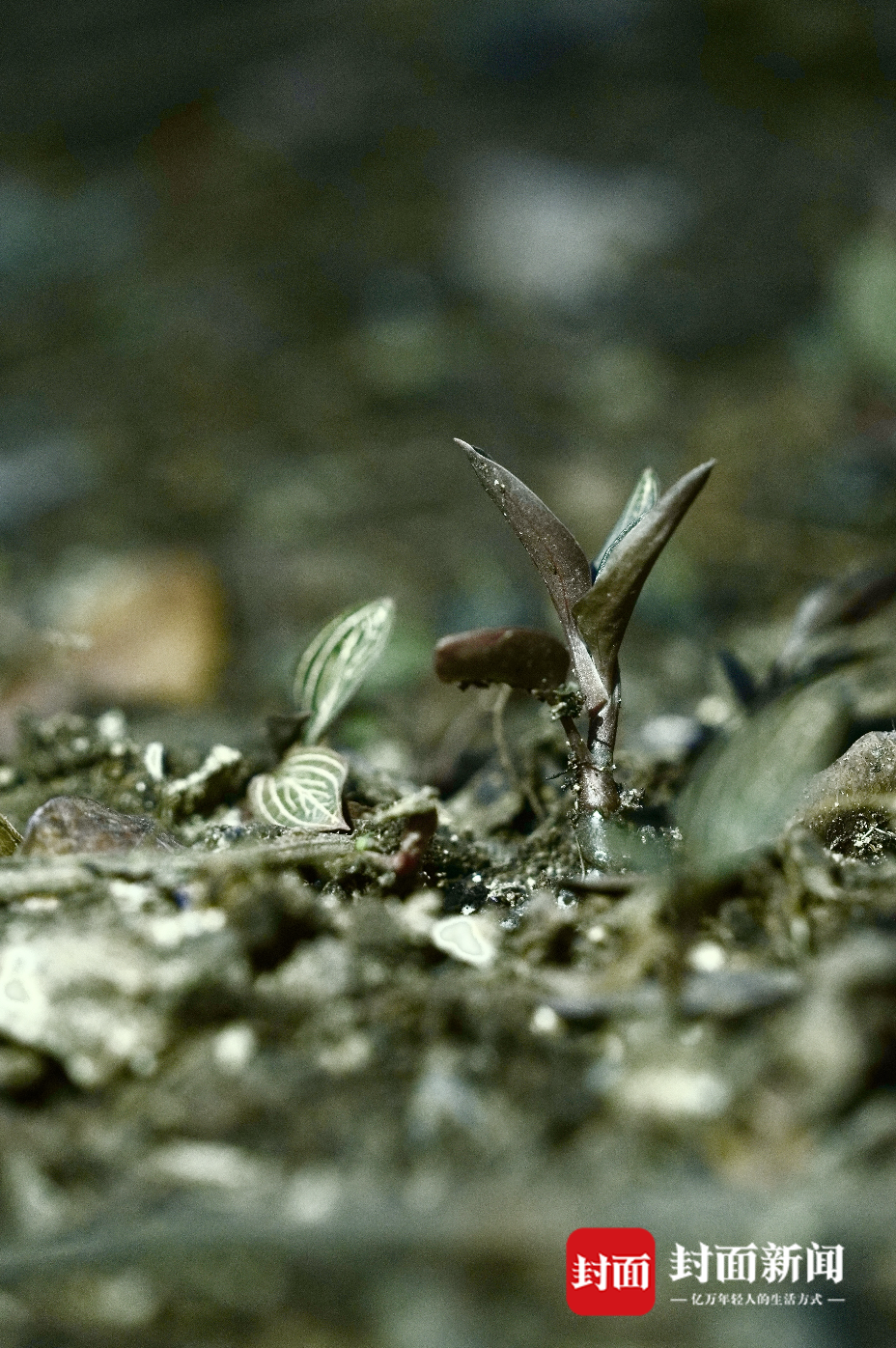
Bloody Leaf orchid cover news reporter shooting
The locals "have a soft spot" about blood leaf orchids, because it has the effect of nourishing the lungs when used as a medicine, and has special effects on lung disease and liver disease. In the market, a pound of wild blood leaf orchids used to sell 600-800 yuan.
At that time, the Hainan Tropical Rain Forest National Park was not yet established. The Bawangling Ridge also belonged to the Bawangling Nature Reserve Administration. While adopting stricter regulatory measures in the Administration, Zhang Zhe was also using his own way to protect the bloody leaf orchids. Professor Song Xiqiang's scientific research team decided to collect the fruit pods of wild blood leaf orchids, and carried out artificial cultivation, and then returned the seedlings to the wild population to restore the number of populations. "We should be the first to try in China." Zhang Zhe said, whether it can be successful or unknown.
In fact, although Bloody Leaf Lan is in danger in Hainan, it is still widely distributed in Guangdong, Guangxi, Yunnan and other places. Even if the wild population in Hainan disappears, it does not mean that this species will be extinct, and even the local ecosystem of the local ecosystem There is no particularly obvious effect.
Blood Yelan's return to this practice has to invest a lot of time and energy, make an unknown attempt, and wait for a long uncertain result. Is this worth it? Zhang Zhe gave a positive answer, "We say to protect ecological diversity, and part of the meaning is to protect genetic diversity. If the wild population in Hainan disappears, it means that this species' genetic diversity is reduced. To keep this group of genes, if it is only cultivated by manual cultivation, it will degenerate after a long time. "
After the group recovery work takes time, it is time for the overlord ridge to preserve a well -preserved population. Zhang Zhe and the team reported the blood leaf orchid to the Bawangling Branch. Zhe's recommendation entrusts the Li people Chen Shu to preach to the local villagers, "Bloodye orchid has scientific research value, do not dig." The scientific research team gives the wild blood leaf orchid group pollination, collects the seeds in the fruit pods, marked the source of the population, and prepared for the future return work. In the wild, the probability of the seeds of blood leaf orchids is extremely low. They need fungal infection to germinate. The growing small seedlings grow at a very slow speed. In the laboratory, the efficiency of each link is much higher. The seeds are germinated in a sterile environment, and the seedlings are cultivated in the group cultivation bottle.
On August 7, 2021, Zhang Zhe also waited for the good news. The adjustment of the "National Key Protection Wild Plants List" was officially announced, and Bloody Leafland ranked among them and became a national second -level protective plant. Under the joint guardian of the Hainan National Park Administration Bawangling Branch, the scientific research team of Hainan University, and the local Li and Miao villagers, the wild blood leaf orchid population continued to grow.
Bloody Leaf orchid cover news reporter shooting
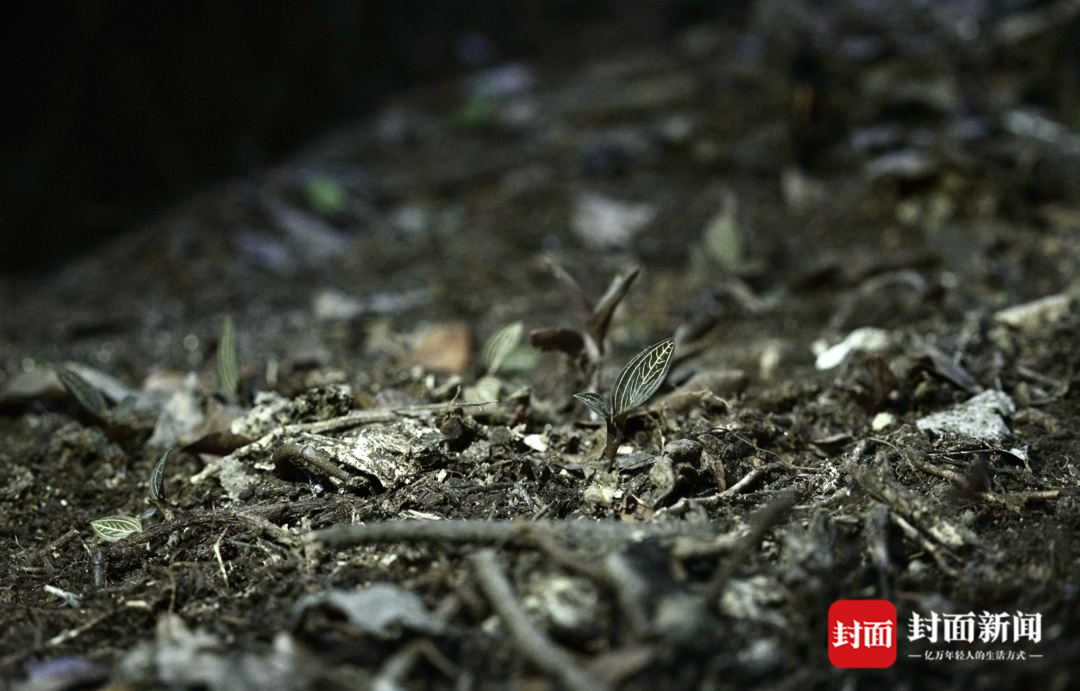
The first wildflow
On May 18, 2022, it was waiting for 3 years, and the artificially cultivated blood leaf orchid seedlings also had 3 knots. Located in Hainan University Base Greenhouses in Bawang Ridge, there are a row of seedlings of blood leaf orchids, with a number of thousands of plants. Zhang Zhe and the other two graduate students decided to bring seedlings into the rain forest.
"These blood -leaf orchid seedlings are basically 5 fruit pods collected that year. The seedlings of artificial cultivation grow very quickly and the number is more. Some of these seedlings are used for scientific research, and the rest will be handed in. Give Hainan Tropical Rain Forest National Park Authority, if necessary, you can also give people who need to treat blood leaf orchids, so that they should not go to picking wild. "
This is the first blood leaf orchido. On May 18, Zhang Zhe and the graduate students of the team returned to their "native land" with the "child" who had cultivated three years. Under the leadership of the Li tribe, they traveled in the rain forest for nearly two hours before arriving at the rainforest before arriving at the rainforest. Initially the boulder growing.
The depths of the rain forest are quiet. The roots of the plate -shaped tree are entangled on the rotten leaves. When the giant tree rises to the high place half a height, it is hidden by layers of leaves. The trunk is attached to orchids and vines. Interweave the net on the top of the head. Occasionally, a few rays of sunlight passed through the dense forest fell on the semi -tall taller talf leaves. Under the large umbrella leaves, the human statue was reduced and fell into the fantasy world.
The gloomy and humid blood leaf orchids were born at the bottom of the rain forest. In order to prevent gene pollution, the seedlings that were cultivated should be returned to the group of seed sources. This is also the place where the blood leaf orchid grows.
Zhang Zhe jumped into the gap between the boulder, and greeted a few graduate students with excitement. "You see, this is the wild blood leaf orchid, which is different from the seedlings of our artificial cultivation. Reiki. "
It was a few small blood leaf orchids, hanging quietly on the stone wall covering the moss. The roots were slender. The leaves were only large in the nails and a length of about 10 cm. "In such a habitat, the stems of blood leaf orchids can only extend one or two sections a year." Zhang Zhe approached one of them. "You see such a small point, it takes nearly 10 years. It is very harsh. "
Zhang Zhe praised the wild nature and aura of plants. In his opinion, the plants have exhausted their strength and wisdom to compete for nutrients, survival and reproduction. This vitality is awesome. He also clearly remembered the feelings when watching the documentary "Plant Private Life" more than ten years ago. It was the first time that he had standing from the perspective of plants to understand their lives, and it was also the beginning of his interest in studying plants. "The survival strategy of these plants is incredible. Like orchids, it will simulate the smell in order to attract fans, and even imitate the sex hormone of female animals to deceive the passenger. Orchids are like human beings in the plant world."
For those who love plants, protecting blood leaf orchids is not only precious and endangered, but also because every kind of life is worth living. "Let's think about it in other places, or a tree or a grass. It can grow up a lot of effort to grow so much. If it has not been blossomed, it will be taken away. What a sad? 'Live, we must respect the power of life. "
Zhang Zhe was shot on the cover of the cover of the Rain Forest Gully Valley
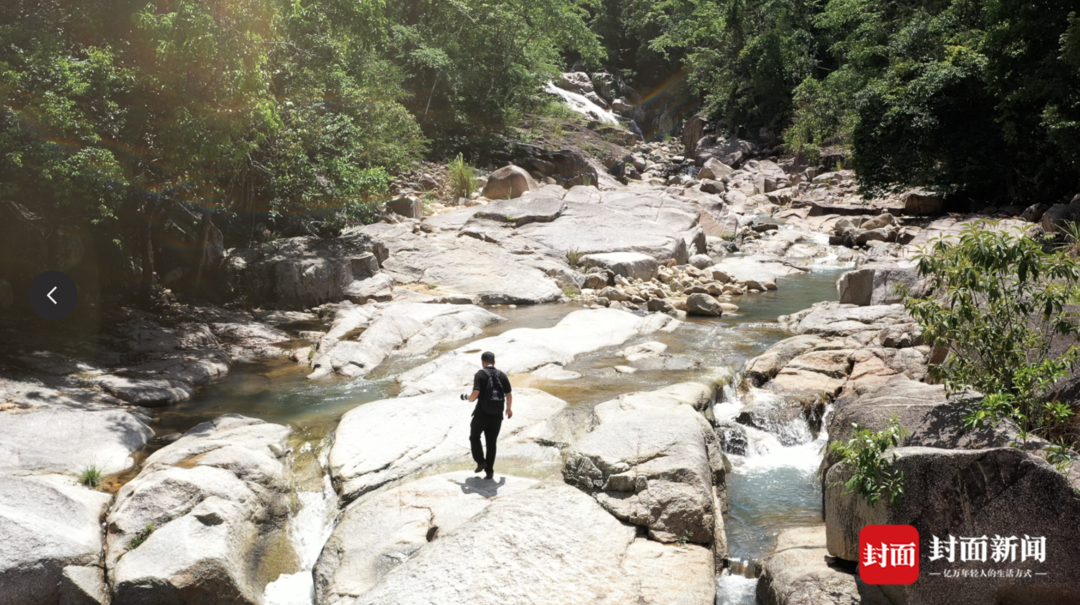
Translation plant language
After a month and a half, Zhang Zhe has not returned to see the survival of Bloody Yelan. "It is particularly slow in the wild, and it can be successful in the end. It depends on whether it can grow to natural breeding. It's all possible. "
Zhang Zhe understands the value of waiting, "Plants' behavior is hidden, slow, only the person who gives patients has the opportunity to penetrate their secrets." As a plant researcher, Zhang Zhe is the most lack of patience. He used to be curious because of curiosity. Hainan Phalaenopsis of the flour, holding a long -focus lens for 28 days, waiting for a pillar -cut leaves to appear, he was deceived into the flower, and left with pollen.
During the time with plants, Zhang Zhe never felt lonely and boring. In our eyes, the "static" plants were friends who could talk to him. "Plants have its language. How many festivals do we have blood leaf orchid stems, we know that it has grown for a few years. When it is blossoming, it will use various strategies to attract powder. With fruit pods, it will also spread Seed strategy. This is a process of life cycle. Observe in different seasons, you will find different languages. "In addition to research, he began to try to make popular science videos. In Zhang Zhe's view, he recorded the plant stories he heard It is important to tell everyone as scientific research. "Like bloody leaf orchids, in the world of thousands of plants, it looks like an unknown grass, but it has its own vitality. Think of artemisinin and Qianjin vine. The most basic thing to get, perhaps in the future, when humans face crisis, the seemingly low life of plants will become 'answers'. "The new phase of popular science video" Blood Leaf Orchid "has already on the agenda, just 3 3 30 seconds is the epitome of the entire team's efforts in the past 6 years.
"We often say that protecting nature. If we don't know what is in nature, we will not know what the purpose of protection is." Zhang Zhe hopes that he can be a medium, bring these vivid plants to the public, and let the tropical rain forest outside the public. People can also know these wisdoms that are not lost to human beings.
The Hainan Tropical Rain Forest National Park Administration also attaches great importance to science popularization. With their support, Zhang Zhe appears on the video platform B of the young people as the new "popular science net red". 20,000 people are concerned about Hainan's tropical rain forest country The park's account was planned by Professor Song Xiqiang. Every time Zhang Zhe served as the director of popular sciences produced by the director, there were more than 10,000 people clicked. They waited for a while and met a new magic through the eyes of scientific researchers.
Although the current flow of popular science videos is not as good as online coffee, Zhang Zhe believes that this is a thing that is greater than traffic. Talking about the knowledge of the tropical rain forest, he must keep doing it at the beginning. In the science popularization, he took out the patience to wait for Bloody Leaves. "Popular science workers need to continue to convey the concept of protecting the environment and biological diversity. This is a very long -term process."
- END -
Landscape Youth ④ | Landscape Designer Steel Pen Painted the exclusive memory of Zhengzhou
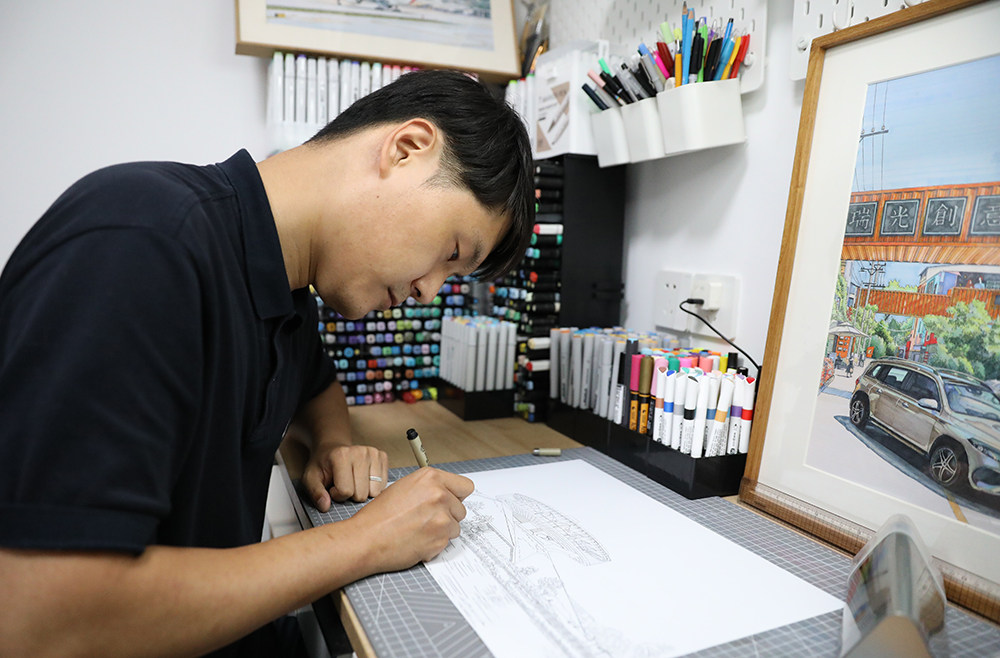
A 2.4 -meter -long panorama, Liu Bingyu painted for half a year, recalled the f...
Fengyang County "Three All" helps "rule of law and benefit farmers"
The first is the full process coverage of the law publicity.Organize grass -roots legal service teams to actively carry out the publicity of straw burn -burning rule of law into 10,000 activities. T